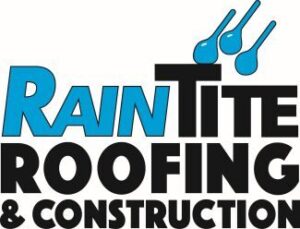Home siding is a crucial part of your house’s exterior. It not only enhances the appearance but also protects against weather and pests. However, over time, siding can develop problems that need attention. Recognizing these issues early and knowing how to fix them can save you time and money.
Common siding problems like cracking, mold, and discoloration can affect your home’s look and its structural integrity. These issues might seem minor at first but can lead to bigger problems if left unchecked. For instance, small cracks can expand and let water seep in, causing mold or rot. Discoloration might be a sign of underlying damage from the sun or moisture. Pests can find their way into tiny gaps and create nests, leading to more significant damage.
In this article, we’ll explore some common siding problems and provide practical solutions to fix them. By understanding these issues and how to address them, you can keep your home in excellent condition. Let’s dive into these common problems and learn how to tackle them effectively.
Cracking and Warping
Cracking and warping are common problems in siding, especially with materials like vinyl and wood. These issues tend to occur due to prolonged exposure to extreme weather conditions. Heat, cold, and moisture can cause the siding to expand and contract, leading to cracks and warps.
Possible Causes:
– Temperature Fluctuations: Extreme heat can cause vinyl siding to warp, while freezing temperatures can make it brittle, leading to cracks.
– Moisture: Water infiltration can cause wood siding to swell and warp. If the water freezes, it can also create cracks.
– Age and Wear: Over time, all siding materials can deteriorate, making them more prone to cracking and warping.
How to Fix:
1. Inspect for Damage: Regularly check your siding for any signs of cracks or warping. This can help you catch problems early before they worsen.
2. Seal Cracks: Use a weather-resistant caulk to seal minor cracks. This helps prevent water from entering and causing further damage.
3. Replace Warped Sections: If sections of your siding are significantly warped, it’s often best to replace them. Remove the damaged pieces and install new siding that matches the existing material.
4. Apply Protective Coatings: For wood siding, applying a protective sealant can help prevent moisture from causing warping.
Mold and Mildew
Mold and mildew are problems you can’t overlook, as they not only affect your siding’s appearance but can also lead to health issues. Mold and mildew grow in damp conditions, so siding that doesn’t dry out properly is at high risk.
Possible Causes:
– Poor Ventilation: Lack of proper airflow can make it easier for mold and mildew to thrive.
– Moisture Build-up: Siding that is constantly wet from rain, snow, or humidity can develop mold and mildew.
– Gutter Problems: Clogged or broken gutters can cause water to overflow and run down your siding, creating a damp environment ideal for mold growth.
How to Fix:
1. Clean the Siding: Use a mixture of water and vinegar or a commercial mold cleaner to scrub away mold and mildew. A soft brush can help remove tough spots without damaging the siding.
2. Improve Ventilation: Ensure that your home has proper airflow. Consider installing vents or fans if necessary.
3. Fix Gutters: Maintain your gutters by cleaning them regularly and ensuring there are no leaks or obstructions. This helps direct water away from your siding.
4. Trim Vegetation: Trim back bushes and trees that are too close to your siding. This helps improve air circulation and allows the siding to dry out more quickly after rain or snow.
By addressing these common siding problems promptly, you can maintain the beauty and integrity of your home’s exterior. In the next sections, we’ll discuss other common siding issues like fading and discoloration, and pest infestation, and how to deal with them effectively.
Fading and Discoloration
Fading and discoloration are common issues, especially for vinyl and wood siding. Over time, exposure to sunlight, rain, and other elements can cause the siding to lose its original color. While this problem is mostly aesthetic, it can make your home look older and less well-maintained.
Possible Causes:
– Sun Exposure: Prolonged exposure to UV rays from the sun can bleach the color out of your siding, causing it to fade.
– Moisture: Consistent exposure to rain and humidity can lead to discoloration, particularly for wood siding.
– Chemicals: Certain cleaning agents can also cause your siding to lose its color if they are too harsh.
How to Fix:
1. Regular Cleaning: Clean your siding at least once a year using mild soap and water to remove dirt and debris that can contribute to discoloration.
2. Protective Treatments: For wood siding, applying a UV-resistant sealant can help protect against sun damage. For vinyl siding, consider using products specifically designed to protect against UV rays.
3. Repainting or Staining: If your wood siding is badly faded, consider sanding it down and applying a fresh coat of paint or stain. For vinyl siding, painting with a suitable paint can give it a fresh look.
4. Shade Trees: Planting shade trees near your home can provide natural protection from direct sunlight, reducing the rate of fading.
Pest Infestation
Pest infestation is another common siding issue that can cause significant damage. Insects like termites and carpenter ants, as well as small animals such as squirrels and birds, can bore into siding, creating holes and structural damage.
Possible Causes:
– Wood Siding: Wood siding is particularly vulnerable to insects like termites and carpenter ants. They can chew through the wood, creating tunnels and weakening the structure.
– Gaps and Cracks: Small openings in your siding can invite pests to make their homes within your walls.
– Vegetation: Overgrown plants and trees can provide easy access for insects and small animals to your siding.
How to Fix:
1. Pest Control: Use insecticides or call in professional pest control services to eliminate the pest problem. Ensure the treatment is thorough to prevent recurrence.
2. Seal Gaps: Inspect your siding for any gaps or cracks and seal them with caulk to prevent pests from entering.
3. Repair or Replace: If your siding has significant damage from pests, replace the affected sections. This can prevent the infestation from spreading.
4. Trim Vegetation: Keep plants and trees trimmed back from your home to reduce the pathways that pests can use to reach your siding.
Conclusion
Maintaining your home’s siding is crucial for its longevity and appearance. By understanding and addressing common issues such as cracking, warping, mold, fading, and pest infestations, you can keep your siding—and your home—in great shape. Regular inspections and timely repairs go a long way in preventing minor issues from becoming significant problems.
If you notice any signs of these common siding problems, taking immediate action can save you time and money in the long run. It’s always beneficial to consult with experts who can provide the right solutions specific to your siding type and the unique conditions of your locality.
Ready to fix your siding issues? Contact us at RainTite Roofing & Construction for professional advice and top-notch siding repair services. Let us help you keep your home looking and functioning its best.

